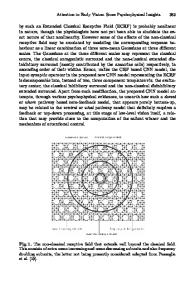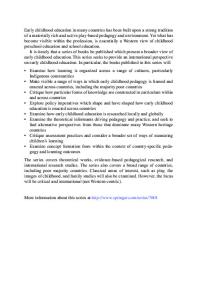Toward Retrieving Early Oral Traditions: Some Ruminations on Orality and Textuality in Early Chinese Culture
In this chapter, the author tries a new approach to early Chinese textuality. The point of departure is no longer the traditional dating of the transmitted text but the possible forms of the underlying original textual and/or oral objects and their evolut
- PDF / 339,318 Bytes
- 17 Pages / 439.37 x 666.14 pts Page_size
- 22 Downloads / 272 Views
Prefatory Remarks1 In this brief chapter, I wish to rethink some issues of orality and textuality in early Chinese culture but without fleshing out every issue or providing exhaustive annotations. These remarks should be seen as a brief summary at the outset of a long-term research project, rather than the presentation of my definitive conclusions. This chapter will cover a very large period of time on which I have little primary research expertise as yet, although in the course of my teaching career I have had some exposure to most of the sources concerned and some of the (rather voluminous) secondary literature. The reason for publishing this chapter nevertheless is the urge to share some of my ideas with a wider audience and, I hope, obtain some feedback. It is important to note that the issues in which I am interested have been exhaustively studied not only for many early script cultures but also for largely oral cultures that either never developed a written culture or developed one very late. Therefore, it is the more surprising that these questions have been raised so rarely in the field of Chinese studies, and when they have been the relevant scholarship seems to have been largely ignored.2 The one systematic study that we have is by Mark Edward
1 I wish to thank Dirk Meyer, Paul van Els, and Joachim Gentz for discussing with me the origins of textuality over the last decade or so. They are in no way responsible for the immature and incomplete form that this chapter still has. 2 C.H. Wang, The Bell and the Drum: Shih Ching as Formulaic Poetry in an Oral Tradition (Berkeley: University of California Press, 1974) is a rare exception. David Schaberg, A Patterned Past: Form and Thought in Early Chinese Historiography (Cambridge: Harvard University Press, 2001), 78–80 and passim treats the use of Yi, Shi, and Shu in early texts, reflecting their use in oral as well as written discourse. To him these are quotations, seemingly implying a “correct” and “original” version. More recently, a number of excellent essays were published in Martin Kern, ed.,
B.J. ter Haar (*) Department of Chinese Studies, Leiden University, Leiden, The Netherlands e-mail: [email protected] P.-k. Cheng and K.W. Fan (eds.), New Perspectives on the Research of Chinese Culture, Chinese Culture 1, DOI 10.1007/978-981-4021-78-4_3, © Springer Science+Business Media Singapore 2013
45
46
B.J. ter Haar
Lewis, but its brilliance and exhaustiveness seem to have so daunted other scholars that they have bypassed the topic, apart from several detailed book reviews.3 In this chapter, I will adopt the viewpoint of the slightly informed layman, in the hope that this will allow me to ask some naive questions that may eventually open the way to new and—I hope—interesting answers. My basic point is that we need to take the oral dimension of Chinese culture much more seriously than we are wont to do, despite the fact that that writing was introduced in China early on and oral culture has the habit of leaving very few traces, making it very di
Data Loading...











